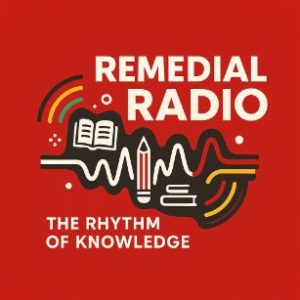Unveiling the Wonders of Our World: Living vs. Nonliving & Animals vs. Plants
Have you ever stared at a shimmering seashell and wondered: is it alive? Or maybe you’ve gazed at a towering tree and pondered: how is it different from a playful puppy? The natural world is bursting with fascinating mysteries, and understanding the fundamental differences between living and nonliving things, as well as animals and plants, forms the bedrock of our exploration. Buckle up, curious minds, because this journey will unlock a deeper appreciation for the incredible diversity of life on Earth!
The differences between living and non living things
Living things and non-living things differ in several key aspects:
1. Organization: Living things are highly organized, with complex structures at different levels (cells, tissues, organs), while non-living things lack this level of organization.
2. Metabolism: Living organisms engage in metabolic processes, converting energy for growth, reproduction, and maintenance. Non-living things do not have metabolic activities.
3. Response to Stimuli: Living organisms can respond to stimuli from their environment, adjusting their behavior or physiology. Non-living things lack this ability to respond in a purposeful manner.
4. Reproduction: Living things can reproduce, producing offspring similar to themselves. Non-living things do not have the capacity for reproduction.
5. Growth and Development: Living organisms exhibit growth and development, with changes occurring throughout their life cycles. Non-living things do not grow or develop in this manner.
6. Adaptation: Living organisms can adapt to changes in their environment over time through evolution. Non-living things do not evolve or adapt in the biological sense.
7. Cellular Structure: Living organisms are composed of cells, the basic units of life. Non-living things lack cellular structure.
8. Homeostasis: Living organisms maintain internal stability through homeostasis, regulating their internal environment. Non-living things do not exhibit this self-regulation.
These distinctions help define the boundary between the living and non-living components of the natural world.
Animals vs plants
Differentiating animals and plants requires a critical analysis of our environment. Animals and plants are two distinct groups of living organisms, and they differ in various characteristics. Here are key points of differentiation between animals and plants:
Plants:
1. Cell Structure:
• Cell Wall: Plants have a rigid cell wall made of cellulose outside their cell membrane.
• Plastids: Plants contain chloroplasts for photosynthesis, giving them their green color.
2. Mode of Nutrition:
• Autotrophic: Plants are autotrophic, producing their own food through photosynthesis.
3. Locomotion:
• Immobile: Generally, plants are stationary and do not exhibit active locomotion.
4. Growth:
• Indeterminate Growth: Plants continue to grow throughout their life, often with indeterminate growth patterns.
5. Reproduction:
• Asexual and Sexual: Plants can reproduce both sexually, through seeds and spores, and asexually, through processes like vegetative propagation.
6. Response to Stimuli:
• Tropisms: Plants respond to environmental stimuli through tropisms, such as phototropism (response to light) and gravitropism (response to gravity).
7. Respiration:
• Aerobic: Plants undergo aerobic respiration, utilizing oxygen to release energy from nutrients.
Animals:
1. Cell Structure:
• No Cell Wall: Animals lack a cell wall, and their cells are surrounded only by a cell membrane.
2. Mode of Nutrition:
• Heterotrophic: Animals are heterotrophic, obtaining their food by consuming other organisms.
3. Locomotion:
• Mobile: Most animals are capable of active movement, exhibiting various forms of locomotion.
4. Growth:
• Determinate Growth: Animals typically stop growing after reaching a certain stage in their life cycle.
5. Reproduction:
• Sexual and Asexual: Animals reproduce sexually through the union of gametes, and some also have the ability to reproduce asexually in specific circumstances.
6. Response to Stimuli:
• Nervous System: Animals have a nervous system that allows for rapid and coordinated responses to stimuli.
7. Respiration:
• Aerobic: Animals undergo aerobic respiration, utilizing oxygen to extract energy from nutrients.
These distinctions highlight the contrasting features and life strategies of plants and animals, illustrating their unique adaptations to different ecological niches.
In closing, your grasp of the distinctions between living and nonliving things, as well as the unique characteristics of animals and plants, has taken a giant leap forward! This newfound knowledge empowers you to delve deeper into the marvels of the natural world. Whether marveling at the intricate dance of a butterfly or appreciating the majestic silence of a towering redwood, you’ll now view nature through a more discerning lens. Remember, the journey of discovery never ends. Keep exploring, keep questioning, and unlock the endless wonders that our planet holds!
Frequently Asked Questions (FAQ) on Living vs. Nonliving & Animals vs. Plants
Here are some commonly asked questions to enhance your understanding of living and nonliving things, as well as the differences between animals and plants:
Living vs. Nonliving:
- Q: Are rocks living things?
- A: No, rocks are nonliving. They don’t grow, reproduce, or require energy to survive.
- Q: What about fire? Is it alive?
- A: Fire is not considered a living thing. While it exhibits some characteristics like movement and energy consumption, it doesn’t grow, reproduce on its own, or have a complex structure.
- Q: Can viruses be considered living?
- A: This is a debated topic. Viruses share some characteristics of living things, like reproduction, but they lack others, like independent growth and metabolism.
Animals vs. Plants:
- Q: Are fungi plants?
- A: No, fungi are a separate kingdom of life distinct from plants. They share some similarities with plants, such as not moving, but they have different cell walls and obtain nutrients differently.
- Q: What about carnivorous plants? Are they both animals and plants?
- A: No, carnivorous plants are still classified as plants. They obtain some nutrients from insects they trap, but they still get most of their energy through photosynthesis like other plants.
- Q: How do single-celled organisms fit in? Are they animals or plants?
- A: Single-celled organisms can be classified as either animals (protozoa) or plants (algae) depending on their characteristics, such as how they obtain nutrients.
These are just a few examples, and the exploration of life’s complexities continues! Feel free to research further and ask more questions as you delve deeper into the fascinating world around us.


Leave a Reply